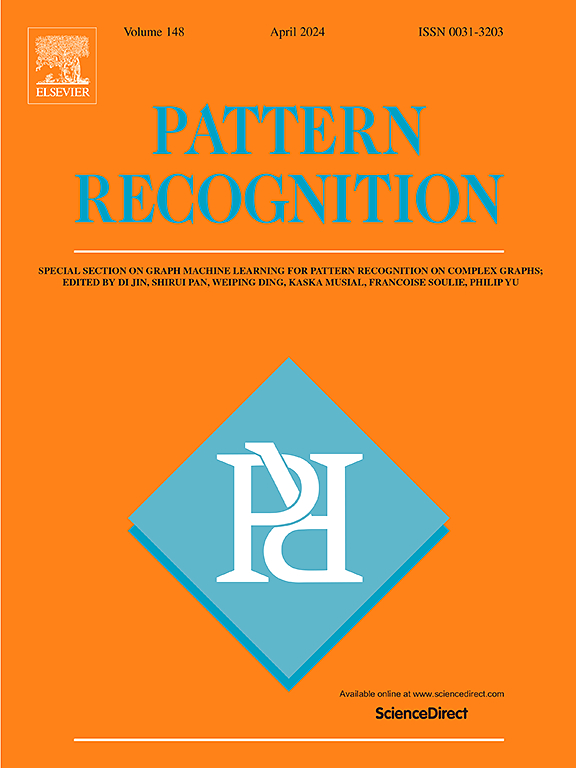ANNE: Adaptive Nearest Neighbours and Eigenvector-based sample selection for robust learning with noisy labels
IF 7.5
1区 计算机科学
Q1 COMPUTER SCIENCE, ARTIFICIAL INTELLIGENCE
引用次数: 0
Abstract
An important stage of most state-of-the-art (SOTA) noisy-label learning methods consists of a sample selection procedure that classifies samples from the noisy-label training set into noisy-label or clean-label subsets. The process of sample selection typically consists of one of the two approaches: loss-based sampling, where high-loss samples are considered to have noisy labels, or feature-based sampling, where samples from the same class tend to cluster together in the feature space and noisy-label samples are identified as anomalies within those clusters. Empirically, loss-based sampling is robust to a wide range of noise rates, while feature-based sampling tends to work effectively in particular scenarios, e.g., the filtering of noisy instances via their eigenvectors (FINE) sampling exhibits greater robustness in scenarios with low noise rates, and the K nearest neighbour (KNN) sampling mitigates better high noise-rate problems. This paper introduces the Adaptive Nearest Neighbours and Eigenvector-based (ANNE) sample selection methodology, a novel approach that integrates loss-based sampling with the feature-based sampling methods FINE and Adaptive KNN to optimize performance across a wide range of noise rate scenarios. ANNE achieves this integration by first partitioning the training set into high-loss and low-loss sub-groups using loss-based sampling. Subsequently, within the low-loss subset, sample selection is performed using FINE, while the high-loss subset employs Adaptive KNN for effective sample selection. We integrate ANNE into the noisy-label learning state of the art (SOTA) method SSR+, and test it on CIFAR-10/-100 (with symmetric, asymmetric and instance-dependent noise), Webvision and ANIMAL-10, where our method shows better accuracy than the SOTA in most experiments, with a competitive training time. The code is available at https://github.com/filipe-research/anne.
ANNE:基于自适应近邻和特征向量的样本选择,实现带噪声标签的稳健学习
大多数最先进的(SOTA)噪声标签学习方法的一个重要阶段是样本选择过程,该过程将噪声标签训练集中的样本分类为噪声标签或清洁标签子集。样本选择过程通常包括两种方法中的一种:基于损失的抽样,即认为高损失样本具有噪声标签;或基于特征的抽样,即同一类别的样本在特征空间中趋于聚类,噪声标签样本被识别为这些聚类中的异常样本。从经验上看,基于损失的采样对各种噪声率都很稳健,而基于特征的采样往往在特定情况下有效,例如,通过特征向量过滤噪声实例(FINE)采样在噪声率较低的情况下表现出更强的稳健性,而 K 近邻(KNN)采样能更好地缓解高噪声率问题。本文介绍了基于自适应近邻和特征向量(ANNE)的样本选择方法,这是一种新颖的方法,它将基于损失的采样与基于特征的 FINE 和自适应 KNN 采样方法整合在一起,以优化各种噪声率情况下的性能。ANNE 通过首先使用基于损失的采样将训练集划分为高损失子群和低损失子群来实现这种整合。随后,在低损失子集中,使用 FINE 进行样本选择,而高损失子集则使用自适应 KNN 进行有效的样本选择。我们将 ANNE 集成到了最先进的噪声标签学习(SOTA)方法 SSR+ 中,并在 CIFAR-10/-100(具有对称、非对称和依赖实例的噪声)、Webvision 和 ANIMAL-10 上进行了测试。代码见 https://github.com/filipe-research/anne。
本文章由计算机程序翻译,如有差异,请以英文原文为准。
求助全文
约1分钟内获得全文
求助全文
来源期刊

Pattern Recognition
工程技术-工程:电子与电气
CiteScore
14.40
自引率
16.20%
发文量
683
审稿时长
5.6 months
期刊介绍:
The field of Pattern Recognition is both mature and rapidly evolving, playing a crucial role in various related fields such as computer vision, image processing, text analysis, and neural networks. It closely intersects with machine learning and is being applied in emerging areas like biometrics, bioinformatics, multimedia data analysis, and data science. The journal Pattern Recognition, established half a century ago during the early days of computer science, has since grown significantly in scope and influence.
 求助内容:
求助内容: 应助结果提醒方式:
应助结果提醒方式:


